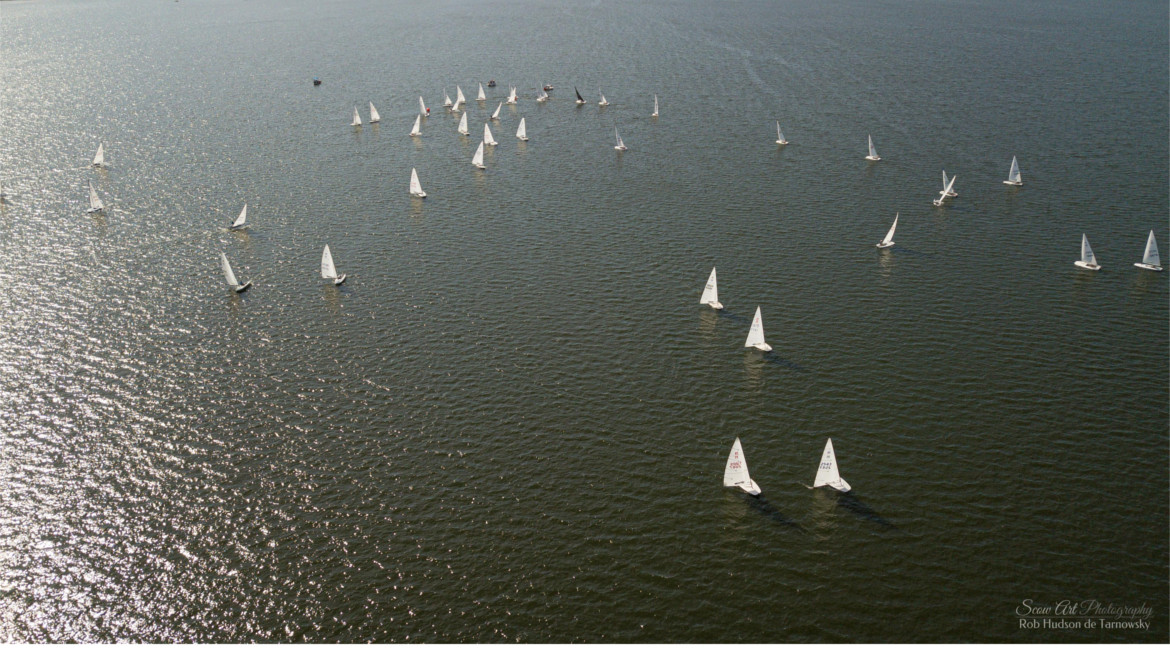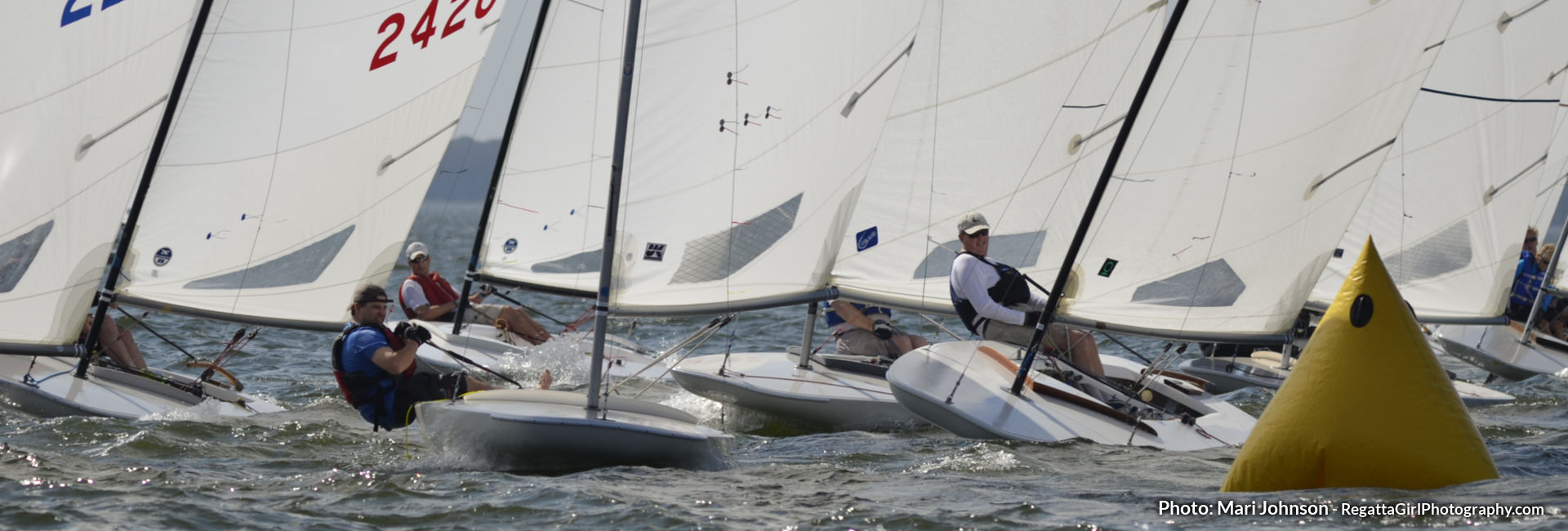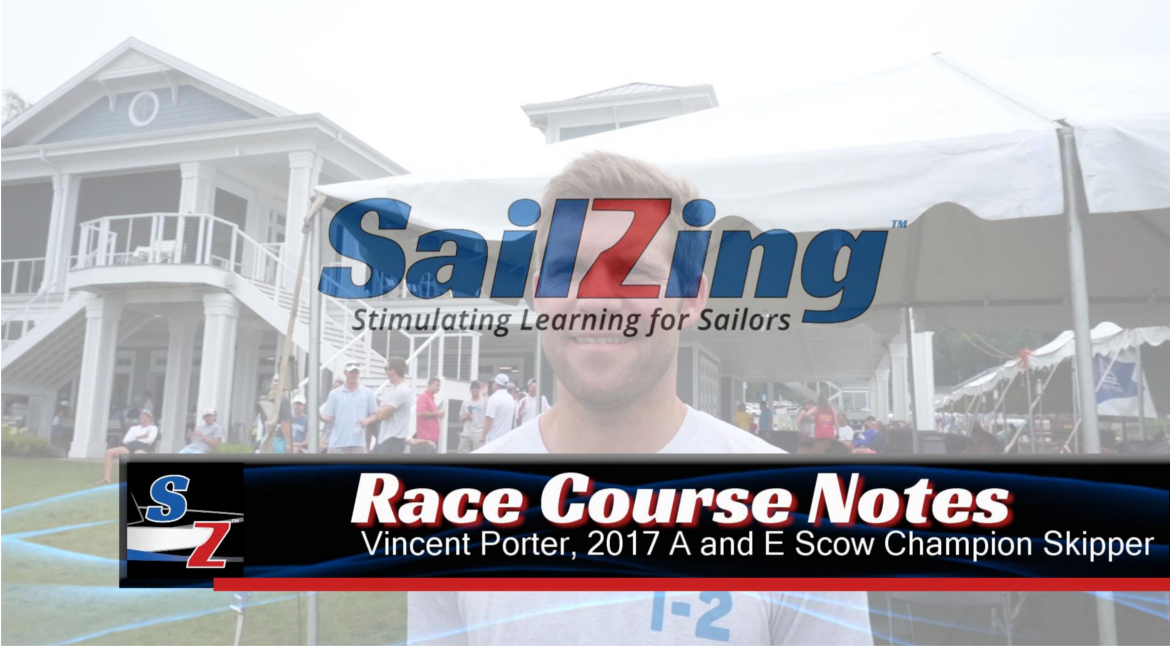Several SailZing readers recently completed a sailing skills survey. One of the areas they requested help on was how to plan the next beat on the downwind leg. We asked Ted Keller to share his thoughts on this topic. Here are Ted’s comments.
In sailboat racing, it always helps to have a plan. This is true as we do our homework before the race starts, but it’s also true as the race unfolds. Conditions change and surprises do happen to the point where we have to abandon that plan, but this is still far better than rounding the mark and saying “OK, where should we go on this leg?”
This is especially true on the second lap of the race course because the savvy sailor has two legs worth of data to use in determining what the wind is doing and where to position the boat. The first downwind offers two key opportunities for planning ahead: the second upwind beat and the upcoming leeward gate.
When to Start Planning
At the top of the downwind leg, all focus needs to be on the exit from the offset mark, sailing the best angle to the leeward marks, sailing fast and staying in clear air. But as the leg progresses, things seem to stabilize and positions become more set as the fleet lines up and sails downwind. About two-thirds of the way down the leg, it’s a good time to start thinking ahead and reviewing the game plan.
Review What You Know
Start big picture. What is the breeze doing? Is it oscillating or steady? Is there more wind on one side of the course? What about a geographic effect? What, if anything, has changed since your pre-start plan?
Also, what did you learn from the first leg? What you saw from all the boats spreading out across the first leg and then coming back together at the top will give a lot of detail as to which side of the course was favored and where on the leg the leaders came from. But it is important not to stop there. We can’t just go left looking upwind on the second lap because it worked the first time.
Apply What You See
Next apply what you see on the racecourse now. Looking backwards on the run, where is there more wind? Which upwind course will get you in to the most pressure? What are the telltales saying about the wind direction? If you’re on port tack and the telltales have gone forward on you, (from dead downwind to more of a reaching angle as you’ve steered straight, or you’ve born off to a lower angle with this shift) then the wind has gone to the right looking upwind.
Gate Factors
Favored?
The goal is to round the gate that heads you in the direction of that shift and then get on the lifted tack as soon as you can. If the wind went right, you’d want to round the left gate (looking downwind) to head to the right (upwind) side and tack as soon as you can to sail the long, lifted tack. This will have you positioned a few rungs on the ladder to windward of the boat that rounds the opposite leeward gate and trims up on the lifted tack. (The distance between the gates is actually how much more to windward you will be positioned.)
So, after we’ve taken a few minutes to review what we noticed on the first leg and see how the wind has changed on the first two-thirds of the downwind, we should have a plan in mind for where to be on the next upwind leg. Now it’s time to think about how to facilitate that plan as we round the leeward gate. Our homework on the run, along with the telltales, should let us know which gate is favored.
Less Traffic? Less Distance?
Follow up questions: is one gate closer than the other? Is there a lot more traffic headed to one gate than the other? Then weigh the options.
It can often be a beneficial move to break ranks and go to the opposite gate in order to avoid rounding in a big clump of boats. Keeping in mind that this is not following the game plan, we’d need to get around the mark, get clear of the boats coming downwind, and tack to get back to the other side of the course if that’s the direction we think is best. But I’d rather give up that distance between the two gates to be sailing alone in clear air than be headed to the favored side while suffering in bad air. Bunches of boats are slow. This is especially true in light air.
But it is a judgment call. If there are only a few boats rounding in front of you and the one gate is very favored, it might be better to get in line and work hard to get to a clean lane or hang on long enough to tack than rounding the unfavored gate.
After the Rounding
Once we are headed upwind and able to look up the racecourse, it’s back to business as usual. Sail for the most pressure on the racecourse, and then sail the lifted tack that takes you closer to the mark.
About Ted Keller
Ted Keller is a professional sailor and part of the Melges Team. He is a tactician and trimmer in the Melges 24 and 20 sportboat circuits.
He grew up racing Butterflies at Torch Lake, MI and has extensive experience racing scows: MC, C, E, Melges 17, and A’s.
Ted is an instructor at Melges’ Zenda University held at Lake Eustis each March. He also puts on clinics throughout the Midwest and provides coaching to scow sailors.
Follow Ted on the TK Sailing Facebook page or #TKSailing.





